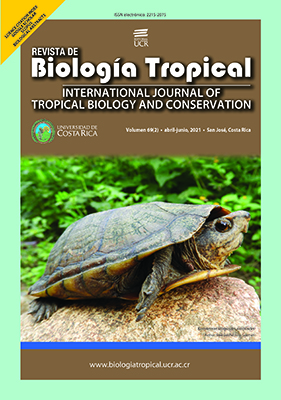Abstract
Introduction: The coral-associated bacteria with antimicrobial activity may be important to promote the health of their host through various interactions, and may be explored as a source of new bioactive compounds. Objective: To analyze the antimicrobial activity of bacteria associated with the zoanthid Palythoa caribaeorum from the coral reefs of Carapibus, Paraiba state, Brazil. Methods: The phylogenetic analysis of the bacteria was conducted based on partial sequences of the 16S rRNA gene using molecular and bioinformatics tools. The antimicrobial activity of the 49 isolates was tested against four bacterial strains and one yeast strain: Bacillus cereus (CCT0198), Escherichia coli (ATCC 25922), Staphylococcus aureus (ATCC 25923), Pseudomonas aeruginosa and Candida albicans (ATCC 10231). The antibiosis and antibiogram assays were conducted and the Minimal Inhibitory Concentration (MIC) was determined by the microdilution method. Results: The bacterial isolates belonged to Firmicutes phylum (84 % of the isolates) and the Proteobacteria phylum (16 % of the isolates). Among the 49 isolates five genera were found, with the Bacillus genus being the most abundant (82 % of the isolates), followed by Vibrio (10 %), Pseudomonas (4 %), Staphylococcus (2 %) and Alteromonas (2 %). Antibiosis test revealed that 16 isolates (33 %) showed antimicrobial activity against one or more of five tested reference strains. The highest number of antagonistic bacteria were found in the Bacillus genus (12 isolates), followed by Vibrio (three isolates) and Pseudomonas (one isolate) genera. The B. subtilis NC8 was the only isolate that inhibited all tested strains in the antibiosis assay. However, antibiogram test with post-culture cell-free supernatant of NC8 isolate showed the inhibition of only B. cereus, S. aureus and C. albicans, and the lyophilized and dialyzed material of this isolate inhibited only B. cereus. The lyophilized material showed bacteriostatic activity against B. cereus, with a MIC value of 125 μg/μl, and in the cytotoxicity assay, the hemolysis value was of 4.8 %, indicating its low cytotoxicity. Conclusions: The results show the antimicrobial potential of some bacterial isolates associated with the P. caribaeourum tissue, especially those belonged to Bacillus genus.
##plugins.facebook.comentarios##

This work is licensed under a Creative Commons Attribution 4.0 International License.
Copyright (c) 2021 Jalcinês C. Pereira, Krystyna Gorlach-Lira, Bruno O. de Veras



